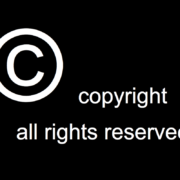Salé v. Barr
Salé v. Barr
Jamie Salé and David Pelletier, plaintiff
(defendants by counterclaim), and
Stephen Barr, also known as Steve Barr, Barr
Photography Inc., Stephen Barr carrying on business
as National Professional Photography and Stephen
Barr carrying on business as Barr Photography,
defendants (plaintiffs by counterclaim)
Judicial District of Edmonton
Judgment: May 9, 2003.
Filed: May 12, 2003.
LEE J.:–
BACKGROUND
1 The Plaintiffs/Applicants, Jamie Salé and David Pelletier (the “Applicants”) are well-known professional figure skaters. While performing at their Golden Homecoming Celebration at Edmonton on March 12, 2002, the Defendant/ Respondent, Stephen Barr, (the “Respondent”) took photographs of the Applicants.
2 At issue in this application is whether the Applicants are entitled to interim injunctive relief preventing one, some or all of the Respondents from reproducing and distributing photographs of the Applicants taken by the Respondent.
3 The Respondent reproduced at least two of the photographs he took and subsequently distributed them to others without permission from the Applicants.
4 Framed copies of at least two of the photographs taken and reproduced have been seen for sale in galleries in Alberta, have been sold at auction, have been seen on display at a Greyhound Bus Depot, sold at fund raisers and displayed at other commercial establishments.
5 The Applicants have commenced civil proceedings in this Court alleging that the Respondents have appropriated the personalities of the Applicants and have committed the tort of passing off.
6 The Respondent’s have filed a Statement of Defence and Counterclaim, and they have filed two Affidavits in opposition to the motion, one from Stephen Barr, and another from Blaine Lefebvre. The Lefebvre Affidavit reads as follows:-
- 1.I am an officer of The Youth Project (AIM) Edmonton and as such have personal knowledge of the facts and matters deposed to herein.
- 2.I have read the Affidavits of the Plaintiffs in this action and there are some events and situations that the Plaintiffs in this action are unaware of, that will change and or have an effect on the view that the Plaintiffs have of the Defendants in this action and I believe may change the outcome or end result of this claim.
- 3.Stephen Barr showed me the photographs that he had taken, as a freelance photographer, of Jamie Salé and David Pelletier at their celebration in March, 2002, at skyreach centre. He showed me a very nice single shot of them, from this event.
- 4.Steve suggested that we, as a charity, arrange to have the prints signed by Jamie Salé and David Pelletier and get their permission to use them for a fundraiser for our project. Through our involvement in unihockey we met a skater by the name of Jamie Bohlmer, who said that he knew Jamie and David and that he could get the prints autographed for charity and we proceeded to make the arrangements.
- 5.In the past we have obtained autographs in this fashion on many occasions, where we knew someone that were friends with the athletes and would get them signed for us. This has been a practice for many years and they were always verbal agreements.
- 6.We dropped the prints off at Jamie’s house, we asked him to get permission, for us to use the prints, as a fundraiser and to get approval to do a numbered addition of the prints for the benefit of our charity and other charities.
- 7.Jamie Bohlmer called us later and said we could pick up the prints, they had been signed and we could use them for a fundraiser. These prints were of Jamie and David in a finish position, just the two of them.
- 8.We arranged to pick up the prints and reaffirmed that we could do a numbered addition and that it was authorized by Jamie and David, and Jamie Bohlmer confirmed to us that it was OK.
- 9.We then delivered the signed prints back to Steve Barr and he proceeded to produce the prints for us and other charities to use as a fundraiser.
- 10.In our opinion, the prints belonged to Steve Barr (he was the freelance photographer or artist) and no one else had the right to produce the prints.
- 11.At this point we believed that we had full authorization from both artists to use the prints as a fundraiser for our project.
- 12.Later on I received a letter from Jamie and David’s manager Dr. Robert Steadward saying that they did not approve of the distribution of the print of Jamie and David in a collage’ print with the Russian skaters from the same event at skyreach centre.
- 13.We were not involved in the production of this particular print, could not give any details or info on this print and I sent a letter back to Jamie and David’s manager.
- 14.In my letter back to their manager I agreed not to market this print and declared that we had not marketed or sold any of these prints and would not do so in the future. We did not market or sell any of these prints and I stated so in my letter.
- 15.However we were still using the print that we had arranged to be signed, as a fundraiser for our charity project. This was the single shot of Jamie and David in a finish position.
- 16.We as The Youth Project are very disturbed about this whole situation and we hope that this Affidavit will help to shed some light on our involvement and we hope that all parties in this claim will be reasonable and an acceptable solution could be reached and this situation could be resolved in an expedient and proper manner.
ANALYSIS
7 An order in the nature of a mandamus or injunction may be granted or a receiver appointed by an interlocutory order of the Court in all cases in which it appears to the Court to be just or convenient that the order should be made, and the order may be made either unconditionally or on any terms and conditions that the Court thinks just pursuant to the Judicature Act, R.S.A. 2000, c.J-2, s. 13(2).
8 A writ of injunction shall not be issued but an injunction may be granted by judgment or order and the judgment or order has the same effect as a writ of injunction formerly had under Alberta Rule of Court 440.
9 The law with respect to interim injunctions is well settled.
10 In 2000, the Supreme Court of Canada confirmed the tripartite test to be the law in Harper v. Canada (Attorney General) [2000] 2 S.C.R. 764 in paragraph 4 by stating:-
- 4.In considering whether an injunction should be granted, and by extension whether an injunction should be stayed pending appeal, the Court considers: (i) whether there is a serious issue to be tried; (ii) whether absent an injunction there will be irreparable harm to the individual seeking the injunction and (iii) the balance of (in)convenience.
11 Based upon the affidavit evidence before the Court there are serious questions to be tried. The Applicants have adduced sufficient law and evidence to demonstrate a strong case against the Respondents, even though the threshold test is something beyond vexatious or frivolous.
12 This case involves issues involving the right to privacy and every person’s right to control their social and economic right and interests. There is also enough evidence of irreparable harm in this case. The Court cannot put a price on one’s reputation, and damages are potentially inadequate compensation in a case like this.
13 The Applicants do not want to run the risk of being associated with any of the Respondents, or any of the photographs they have unilaterally chosen to put in the market place. The Respondents have wrongfully usurped the Applicants’ right to control and market their own images.
14 The irreparable harm is not only in the form of lost commercial profit, it is the loss of control over one’s image and the loss of control over whom or what that image is associated with.
15 The Affidavit evidence supports the contention that the Respondent is using his photographs of the Applicants to promote his own reputation, profile and economic interests. He does that by placing his signature and seal on photographs also bearing the signatures of the Applicants.
16 The Applicants apparently do not like the images, especially the large framed photograph of the Applicants in their “finish position”. Related to irreparable harm is the balance of inconvenience. The Respondents have not put forward admissible evidence of any harm or damages that will be suffered if the injunction is granted. If the Respondent’s Affidavit evidence is taken at face value, he is not selling the photographs for profit.
17 On the other hand, the Applicants have provided evidence of a market strategy that will be impaired every time one of their fans and potential customers purchase or receive one of the products distributed by the Respondent. Few of these potential customers will purchase a second product from the Applicants after they have purchased a first from the Respondent at discount prices.
18 The Applicants have also provided numerous affidavits which state or strongly suggest that the Respondents are in the practice of “appropriating” and “passing off” photographs of well-known local athletes for personal financial gain.
19 An early example of the cause of action of appropriation of personality being applied successfully comes from the Ontario County Court decision in Racine v. C.J.R.C. Radio Capitale Ltee 17 O.R. (2d) 370. The Plaintiffs successfully sued for damages for appropriation of personality by the Defendant. As part of its analysis, the Court referred to a learned text writer as follows:-
- “In Fleming, Law of Torts, at p. 530, it is asserted that “reputation has long been regarded as a right of property’ so as to support injunctions restraining libel or slander even when the victim’s economic interests are not affected and it would require little ingenuity to apply the same formula to offensive appropriation of such other personal attributes as name likeness and life history”.
- In the present case we are dealing with the name and personality of a person who claimed to be professional athlete.”
20 In paragraph 19 of the Ontario Court of Justice decision in Horton v. Tim Donut Ltd. [1997] O.J. No. 390 the Court summarized as follows:-
- Thus, the gravamen of the tort is the usurpation of the Plaintiff’s right to control and market his own image. Implicit in this is the protected right of the celebrity to profit from the use of his or her personality and to decide how that profit is to be earned.
21 In Corlett-Lockyer v. Stephens, [1996] B.C.J. No. 857 [Prov. Ct.] the Plaintiff sued for damages for unauthorized use of photographs. The Defendant used the Plaintiff’s pictures in newspaper advertisements for its body piercing and after care business. The Defendant applied to have the case dismissed on the basis that only the Supreme Court of British Columbia had jurisdiction to deal with the case because of the Privacy Act of British Columbia. The Provincial Court decided it had jurisdiction and, in paragraph 8, said:-
- The law of torts is an emerging one and in my view it would be open to a trial judge to find that there is a cause of action in tort at common law based on the right to privacy.
22 The Applicants have provided the Court with a 1998 Supreme Court of Canada decision in Aubry v. Éditions Vice-Versa, [1998] 1 S.C.R. 591. The case is instructive for its recognition and analysis of the mutual rights and obligations sought to be balanced and protected by the common law and privacy legislation. The appeal concerned the scope of the right to one’s image as an element of the more general right to privacy, and it involved a balancing of the right to privacy and freedom of expression. The issue involved publication of a photograph taken without permission which, by analogy, the Applicants draw a parallel to the Respondents distributing photographs of the Applicants without permission.
23 In the dissenting opinion, C.J. Lamer said, in paragraph 23:-
- In the abstract, to appropriate another person’s image without his or her consent to include it in a publication constitutes a fault.
24 In the majority reasons at paragraph 63, the Supreme Court of Canada said:
- An artist’s right to publish his or her work cannot include the right to infringe, without any justification, a fundamental right of the subject whose image appears in the work. While the artist’s right must be taken into consideration, so must the rights of the photograph’s subject. If it is accepted that publishing the artist’s work is an exercise of freedom of expression, the respondent’s right not to consent must also be taken into consideration.
25 Professor Klar summarizes the cause of action of “passing off” as follows:-
- The developing tort of appropriation of personality is supported in part by the law of passing off. Where the wrong of using the Plaintiff’s name or identity without consent is characterized as misrepresentation rather than misappropriation, the wrong may be actionable under the principles of passing off as they are currently developing.
26 In many cases, the passing off cause of action is alleged in relation to competitors engaged in a common field of business or activity where one competitor is alleged to have named, packaged or described its product or business in a manner likely to lead the public to believe it’s the other competitor’s product or business. However, Courts have recognized that the tort is broader than that.
27 In National Hockey League et al v. Pepsi-Cola Canada Ltd. (1992), 42 C.P.R. (3d) 390, the British Columbia Supreme Court said on page 9:-
- The second, and nowadays perhaps more common type of passing off, is where it is alleged that a Defendant has promoted his product or business in such a way as to create the false impression that his product or business is in some way approved, authorized or endorsed by the Plaintiff or that there is some business connection between the Defendant and the Plaintiff. By these means a Defendant may hope to “cash in” on the goodwill of the Plaintiff.
28 In 1992 the Supreme Court of Canada decided Ciba-Geigy Canada Ltd. v. Apotex Inc. [1992] 3 S.C.R. 120 a case involving the tort of passing off. Some relevant passages from the unanimous decision include:-
- 33.The three necessary components of a passing-off action are thus: the existence of goodwill, deception of the public due to a misrepresentation and actual or potential damage to the plaintiff.
- 39.It is clear that however one looks at the passing-off action, its purpose is to protect all persons affected by the product.
- 43.There is also the concept of ownership, protected by the passing-off action in relation to goodwill, a term which must be understood in a very broad sense, taking in not only people who are customers but also the reputation and drawing power of a given business in its market.
- 46.The purpose of the passing-off action is thus also to prevent unfair competition. One does not have to be a fanatical moralist to understand how appropriating another person’s work, as that is certainly what is involved, is a breach of good faith.
- 47.Finally, another more apparent, more palpable aspect, a consequence of the preceding one, must also be mentioned. The “pirated” manufacturer is very likely to experience a reduction in sales volume and therefore in his turnover because of the breaking up of his market. When such a situation occurs in the ordinary course of business between rival manufacturers that is what one might call one of the rules of the game, but when the rivalry involves the use of dishonest practices, the law must intervene.
- 54.The look, the appearance, the get-up of a product play a crucial role in the purchase process since they are the chief means at the manufacturer’s disposal to attract customers. The importance of visual impact is well known: what appeals to the eye is crucial.
- 59.Outside the field of pharmaceutical products, the courts and authors have unquestionably recognized that the consumer, or the person who might be called the ordinary customer – the last link in the chain – is also part of the “clientele” in whose minds any confusion must be avoided.
- 62.There is no question that confusion, which is the essence of the tort of passing-off, must be avoided in the minds of all customers, whether direct – here one thinks of the retailers – or indirect – in that case the consumers. Proof of reputation or secondary meaning and of misrepresentation has never been limited by the courts to direct customers of the person claiming a right.
- 65.…The passing-off action is entirely consistent with the plethora of present-day protectionist provisions, even though it existed long before they did!
29 In Walt Disney Productions v. Triple Five Corp. (1994), 113 D.L.R. (4th) 229 [Alta. C.A.], the Trial Judge granted a permanent injunction in a passing-off action preventing Triple Five Corporation from using the word “Fantasyland” as the name of its amusement park, which decision was upheld on appeal.
30 In Walt Disney Productions, both the Trial Judge and the Court of Appeal found that Triple Five’s use of the name “Fantasyland” constituted a misrepresentation that it had authorized from Disney to use the name and thus was somehow associated with Disney. Both Courts held that was sufficient misrepresentation to establish a passing off.
31 In paragraphs 48 and 49 of its decision, the Court of Appeal said:-
- 48.The essence of a passing off action is the misrepresentation and the resultant confusion in the public mind which causes or is likely to cause damage to the property interest of the plaintiff. The foundation of such action is the existence of a property right in the goodwill and reputation associated with a trade name.
- 49.…The law of passing off does not require proof of actual confusion which leads to specific pecuniary damages.
CONCLUSION
32 The Respondent Ken Barr in his Cross Motion asks that his name be removed from the claim. Firstly Ken Barr presents little, if any, admissible evidence in support of his Cross Motion and secondly there is specific evidence implicating him as a Defendant in this case. it would be inappropriate to allow him to be summarily removed at this time in this manner. Accordingly Mr. Barr’s Cross Motion is denied, and can be dealt with at trial.
33 I grant the applicants in this matter an interim injunction as follows:-
- (a)That none of the Respondents directly or indirectly, make a copy of any negative or photographic, poster or print image any of them have or obtain of either or both of the Applicants.
- (b)That the Respondents immediately refrain from directly or indirectly publishing, selling, distributing or giving up possession of any negative or photographic, poster or print image any of them have or obtain of either or both of the Applicants to any person, club, association, society or corporation for any reason.
- (c)Both the Applicants and the Respondents have applied for costs of this Application. I award the Applicants $1,000.00 costs payable in any event of the cause, payable at the determination of this matter.
- (d)In these circumstances, I will not require the Applicants to post any written undertaking to pay damages to the Respondents arising out of this interim injunction.
LEE J.





![copyright_crystal_black By No machine-readable author provided. Scindo assumed (based on copyright claims). [Public domain], via Wikimedia Commons](https://zvulony.ca/wp-content/uploads/2012/11/Copyright_crystal_black-180x180.png)

![By 112.Georgia (Own work) [CC BY-SA 3.0 (http://creativecommons.org/licenses/by-sa/3.0)], via Wikimedia Commons](https://zvulony.ca/wp-content/uploads/2014/01/Twitter_logo_2006-2012-80x80.png)